Contents
- 1 1. Application of PCBs in Consumer Electronics
- 2 2. Do you know Light Applications in PCB?
- 3 3. PCB is Also Vital in Medical Facilities
- 4 4. Common Industrial Devices That Use PCBs
- 5 5. How Does PCB Show up in the Car?
- 6 6. PCB a Wide Range of Aerospace Applications
- 7 7.1 PCB Applications In Maritime Industry
- 8 8.1 PCB Uses In Safety And Security
- 9 9.1 Do PCBs Improve Military & Defence Technology?
- 10 10.1 PCBs In Renewable Energy
- 11 11.1 Applications Of PCB In The Fitness Industry
- 12 12. Importance Of PCBs In Robotics
- 13 Conclusion
1. Application of PCBs in Consumer Electronics
Consumer electronics account for the most significant chunk of overall PCB applications.
Consumer electronics refers to devices people use every day, including computers, smartphones, and kitchen appliances.
Because consumer electronics are available in large quantities, the PCBs used to control them must also be produced in massive quantities to meet the demand.
Companies manufacturing PCBs must comply with strict quality control measures and industry standards to maintain quality and uniformity in such a vast volume.
It ensures that the final product functions optimally.
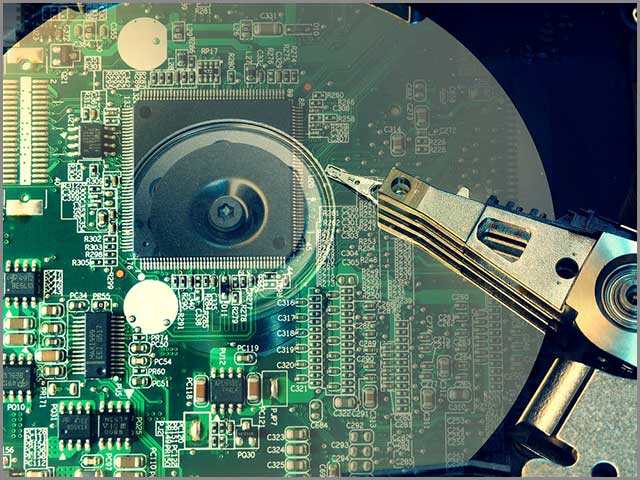
1.1 Common Consumer Electronics That Use PCBs
The number of consumer electronics that have PCBs is massive. Below are several examples of:
1.1.1 Computer Electronics
All laptops and desktops have PCBs at their cores.
Screens and other peripheral devices that are associated with computers contain PCBs as well.
1.1.2 PCB Applications—Mobile Devices
Today, tablets and smartphones are essential parts of people’s daily routines.
These devices have a wide variety of functions, including alarm clocks and GPS.
1.1.3 PCB Applications—Recording Devices
Recording devices like microphones, digital cameras, and camcorders have internal PCBs that help them to work appropriately.
1.1.4 Home Appliances
Your microwave, coffee maker, refrigerator, electric oven, and other appliances run on electronic components that use PCBs.
1.1.5 Entertainment Systems
Your entire entertainment system runs on PCBs, from the TV set to the video game console.
2. Do you know Light Applications in PCB?
Over the years, LED lighting solutions have increasingly gained popularity within many industries due to their low energy consumption, remarkable light output, and unquestionable efficiency.
By integrating LED lighting with a printed circuit board, the lighting gains more versatility.
Printed circuit boards increase the applications of LED lighting solutions, particularly when it comes to indicators and displays.
2.1 Common Applications of PCB LEDs
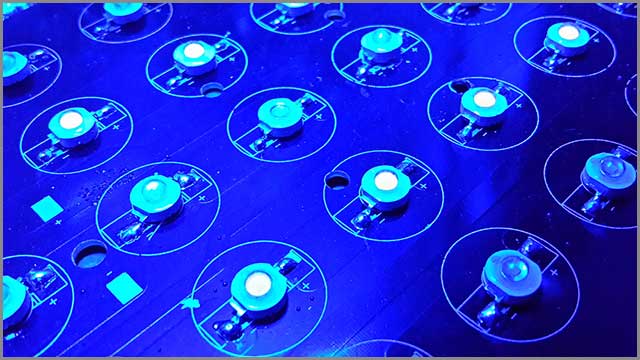
2.1.1 The Telecommunications Industry
A wide array of telecommunications equipment uses PCBs to control LED displays and indicators.
Due to the density of the material used, lightweight PCBs with high durability are preferable in this industry.
Aluminum PCBs are superior to the density of the material used.
Because of their impressive heat transfer properties.
2.1.2 PCB Applications—The Computer Industry
Another area where PCB applications are evident is the computer industry.
Most laptop and desktop indicators and displays feature PCB-based LEDs.
Aluminum-based PCBs are highly favored because computer technology tends to be highly heat-sensitive.
2.1.3 PCB Applications—The Automotive Industry
Dashboard indicators, brake lights, headlights, and other panel displays use LED screens.
PCB LEDs are preferable because of their durability and affordability.
2.1.4 Storefront Applications
Business signage and displays are increasingly using PCB LEDs. Most businesses use customizable screens to direct customers to their storefronts.
3. PCB is Also Vital in Medical Facilities
The healthcare industry uses a vast array of electronics daily, especially when it comes to diagnostic, treatment, and monitoring equipment.
As electronics become increasingly efficient, their medical applications evolve, too.
Medical electronics rely heavily on printed circuit boards. All PCBs within this industry tend to be highly specialized to accommodate the unique requirements of medical equipment.
High-density interconnect printed circuit boards (HDI PCBs) are usually preferred when it comes to medical applications.
To allow for flexing during use, PCBs in this industry may feature flexible base materials.
3.1 PCB Applications—The Need for Reliability
The medical industry is susceptible. Therefore, medical PCBs are subject to higher standards than PCBs used in most other sectors to ensure reliability and uniformity.
3.2 Common Medical Devices That Use PCBs
PCB applications in the medical field have increased over the years. The following is a list of the most frequent medical PCB applications:
Personal and healthcare monitors
Scanning Equipment
Internal Devices
Control Systems
Scientific Instrumentation, e.g., microscopes
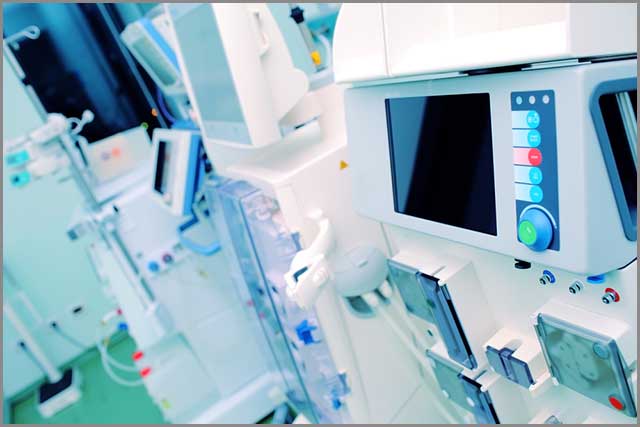
4. Common Industrial Devices That Use PCBs
Manufacturing facilities and factories often rely on electronic equipment to get work done.
Therefore, high-powered applications for printed circuit boards are quite common in this sector.
Industrial installations controlled by PCBs often need to survive harsh conditions, including rough handling, vibrating machinery, and toxic chemicals.
Therefore, PCBs used in industrial electronics must be suited to these challenging conditions.
For that purpose, designers prefer thick copper printed circuit boards (PCBs), which are much more abundant than the standard ounce variants.
Thick copper PCBs effectively facilitate high-current applications as well as battery chargers.
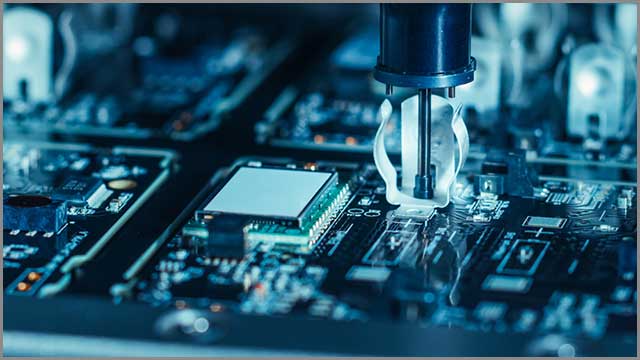
Industrial Equipment
Most electric drills used in the manufacturing industry have PCB electronics.
Other industrial equipment with PCBs at its core includes electric presses.
Power Equipment
Solar power cogeneration devices, DC-to-AC inverters, and many other power control devices rely on PCB electronics.
Measuring Equipment
Almost all equipment used to measure and control temperature, pressure, and other variables in the manufacturing process uses printed circuit boards.
5. How Does PCB Show up in the Car?
All cars manufactured today use electronic components to perform various functions, unlike in the past, when electronic circuits were only featured in windshield wipers and headlight switches.
Automobiles manufactured in the modern era can fully utilize electronic circuit technology by incorporating printed circuit boards in new applications.
Sensor applications in today’s automobiles use PCBs that work with high-frequency signals.
Modern technology uses radar; cars can now monitor blind spots and avert collisions. Systems like these improve road safety and the driving experience.
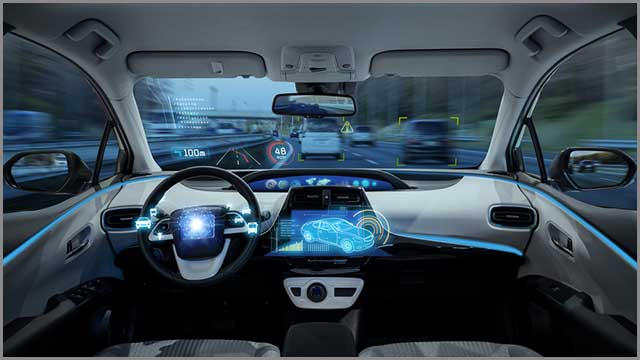
5.1 PCB Applications—Common PCB Applications within the Automotive Industry
5.1.1 Surrounding Monitors
Many new car models come with extensive safety systems that assist the driver in judging distances and monitoring blind spots accurately.
Full-perimeter monitor systems use cameras or radar to alert the driver of nearby objects.
5.1.2 PCB Applications—Navigation Equipment
Many modern vehicles incorporate navigation devices to give drivers directions in unfamiliar territory. GPS computers are now standard in most cars.
5.1.3 Control Systems
Fuel regulators, engine management systems, power supplies, and other car control systems use PCB-based electronics to manage and monitor resources.
5.1.4 PCB Applications—Video and Audio Devices
Modern cars feature advanced dashboards that help connect the vehicle to the music device, radio, or smartphone.
Some family cars also have passenger movie screens. These video and audio devices make use of PCB-based electronics.
6. PCB a Wide Range of Aerospace Applications
Just like in the automotive industry, PCBs have a broad application in the aerospace sector.
They must be highly precise and durable.
Rockets and jets usually undergo much turbulence in their atmospheric journeys, so an ordinary PCB is no good when enduring that amount of stress.
Manufacturers use flexible PCBs instead because they’re light, small, and resistant to damage caused by vibrations.
Aerospace PCBs need to be extremely precise to avoid technical issues during use. Their optimal functioning is crucial to the safety of the crew.
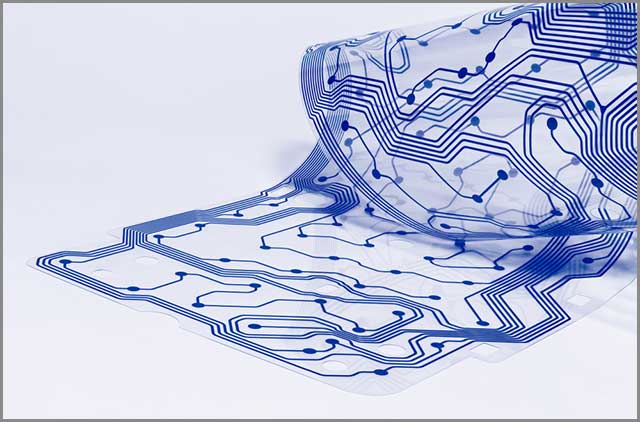
6.1 PCB Applications—Common Aerospace Equipment That Uses PCBs
6.1.1 Monitoring Equipment
Most monitoring instrumentation used within the cockpits and engines of rockets and airplanes incorporate PCBs.
These instruments include pressure, accelerometers, torque, microphones, and force sensors.
The products help monitor the vehicle’s function and enable communication with ground control.
6.1.2 PCB Applications–Testing Equipment
Besides helping the aircraft function correctly, PCBs play an integral part in developing and testing these vehicles.
PCBs play a significant role in testing equipment that helps collect data, especially during the vibration, structural, or flight testing procedures.
The data collected assists in the development of more efficient and safer air vehicles.
7.1 PCB Applications In Maritime Industry
We mentioned the importance of PCBs on land and air. Similarly, Multilayer PCBs are also a make-or-break feature in the maritime industry.
Water vessels rely on precise data and electrical signals to relay accurate information.
The PCBs in maritime applications need to resist flames, be lightweight, and be extremely moisture resistant.
Maritime vessels would not operate efficiently without accurate navigation systems.
PCBs provide a communication channel for GPS systems, radar, and sonar.
These systems guarantee safe, accurate movement and reduce the risk of collisions.
7.1.2 In Maritime Communications
Fast and clear communications could differentiate between successful maritime missions and disaster or failure.
Radio systems make all the difference here.
PCBs are in all maritime communication devices, including radios, antennas, and automatic identification systems(AIS).
7.1.3 In Control Systems
Apart from navigation, control is also vital for maritime vessels.
PCBs help monitor power distribution systems, cruise control, and high-heat applications like engine performance regulation and alerts.
7.1.4 In Submarines

Submarine interior control panel
You cannot fail to mention the role of PCBs in submarines.
They rely on pinpoint location accuracy, communication, and data transfer in harsh maritime environments for long periods.
PCBs are in a submarine’s sonar, propulsion system, data encryption, and cruising systems.
They are also in the sensors that control the sub’s air levels.
8.1 PCB Uses In Safety And Security
The safety and security industry has its prints everywhere.
Hundreds of applications rely on sensors and alert systems for effective safety and security assurance.
PCBs in safety and security need to be all-weather, able to withstand harsh environments, small and light, and sensitive to any changes.
8.1.1 Smoke and Carbon Monoxide Detection Devices
Homes and businesses worldwide need active and functional smoke and carbon monoxide detectors.
Since they need to be highly accurate and sensitive to changes, the PCBs need to communicate quickly as soon as they detect danger signs.
PCBs are in the alarm systems to ensure prompt alerts.
8.1.2 Security Cameras
Security cameras and their complementary systems rely on the PCBs in the visual and audio parts.
Motion sensors, audio transmitters, and image processors have printed circuit boards.
8.1.3 Emergency Equipment
Emergency equipment in safety and security covers essentials such as display/warning signs.
They use LED panels that have PCBs.
Automatic response systems also rely on PCBs to improve timing.
8.1.4 Access Control
Access control systems are at the core of safety and security equipment to control movement and reduce unauthorized access.
PCBs enable communication and accuracy in smart locks, biometric readers, and card and eye scanners.
8.1.5 Automatic Public Address Systems
It wouldn’t be a complete safety and security system if a public address system were missing.
The role of PCBs in these address systems is clear in evacuation instruction appliances and announcement equipment. Speakers, sirens, and alarms are parts of the safety and security ecosystem.
9.1 Do PCBs Improve Military & Defence Technology?
Military and defense are all about precision and fast communication, so it makes sense that PCBs improve these systems.
Rigid PCBs in military and defense operations must be accurate, sensitive to environmental changes, hardy, and hardly vulnerable to heavy shock and impact.
9.1.1 Portable Equipment
Military personnel constantly haul heavy packages in the field. Therefore, any equipment must be discreet and weigh enough not to cause inconvenience.
Think of portable walkie-talkies, location devices, and other devices that use electrical connections.
9.1.2 Surveillance and Recon

Military defense control room
Field experts use sonar, navigation, and tracking devices to conduct informed missions.
These devices need data encryption and low signal loss data transfer, all traits of good PCBs.
9.1.3 Weapons and Armory Access Control
Weapons and control of weapon storage rooms go hand in hand.
Weapons need precision to minimize collateral damage. Guided systems also need highly accurate inner systems.
On the other hand, armory access control needs devices with sensors and enhances security.
9.1.4 Cross-location and Distant Communication
Defense, as a round-the-clock function, requires regular and prompt communication.
Every station and all personnel have communication devices that rely on PCBs for near-perfect signal integrity.
10.1 PCBs In Renewable Energy

PCBs feature in green energy.
As we explore more energy-efficient ways to power homes and industries, we uncover ways to use sustainable energy to protect the environment.
Therefore, PCBs are in the middle of a crucial shift to renewable energy.
To maintain sustainability, renewable energy PCBs must meet all the design considerations in reliability, size, and material availability.
10.1.1 Power Generation
PCBs have different uses in solar, wind, and water power generation. However, all these methods generate electricity.
They are in tough environments requiring heat, moisture, salt corrosion, or friction resistance.
The copper in PCBs makes electrical transfers faster and more efficient.
The PCBs include solar panels, wind turbines, home micro hydropower stations, and geothermal systems.
10.1.2 Power Storage
Storage is a major part of renewable energy.
Power storage systems pair with automation to store and release energy for use.
These systems rely on PCBs for accuracy and energy efficiency.
10.1.3 Monitoring
You need to monitor usage statistics to make improvements. The monitoring systems require screens and indicators, which rely on electrically efficient PCBs.
10.1.4 Electrical Vehicles
There is a big shift to EVs. However, these EVs function in areas with accessible charging stations. The charging stations utilize electrical systems to provide and store power. What’s common between EVs, charging stations, storage systems, and in-vehicle communication devices? PCBs.
10.1.5 Smart Grids
Smart grids have microcontrollers, chips, and power regulators. PCBs are central to the efficient functioning of these components.
11.1 Applications Of PCB In The Fitness Industry
The fitness industry is huge. You cannot leave it if you’re discussing PCB applications.
After all, the fitness industry is now rife with wearable tech, monitoring & communication systems, and storage.
11.1.1 Smart Wearable Fitness Tech
Manufacturers use PCBs in fitness devices to track progress and manage data.
The PCBs in wearable tech are small, lightweight, and made from affordable material with maximum signal integrity.
11.1.2 Fitness Appliances
Fitness machines, most of them electric, are loaded with PCBs, which contribute heavily to their smooth operation.
12. Importance Of PCBs In Robotics
Robotics are possibly in every sector we have mentioned. Robots reduce inefficiencies where human input is unnecessary or requires fast computations.
Therefore, you will find robots in med-tech, farming, assembly, and PCB manufacturing.
Lightweight PCB substrate materials are a major factor in manufacturing robotics PCBs.
Additionally, they must do well in hot and cold environments so that machines can be deployed in any environment.
However, PCBs in robotics might need extra quality assurance checks to ensure they operate correctly to the slightest degree.
Conclusion
Printed circuit boards (PCBs) are integral to a wide variety of sectors. Any industry that uses electronic devices needs PCBs.
Regardless of the application you’re using a printed circuit for; the PCB must be reliable, durable, and cost-effective. At WellPCB, we provide top-quality PCB solutions tailored to your unique needs.
Our products adhere to stringent industry standards to ensure every device performs as expected.
Would you like to learn more about our products and the industries we serve?
Contact us today or visit our website for more information.





